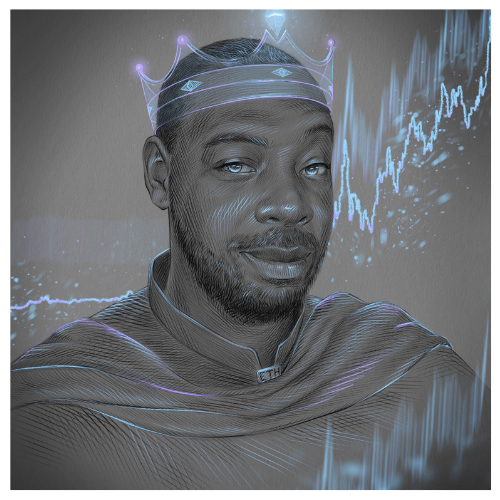Understanding NFTs: A Beginner’s Guide
By Peter Romulus Dec 01, 2024
Introduction
Greetings Warriors!
Today, let’s explore the fascinating world of NFTs (Non-Fungible Tokens) in a way that’s both informative and easy to understand. Whether you’re a curious newcomer or a professional seeking a new perspective, this guide will walk you through the basics, applications, and potential of NFTs. So, buckle up—this journey into digital ownership is one you won’t want to miss!
The Essence of Non-Fungibility
At their core, NFTs, or Non-Fungible Tokens, are digital assets that represent ownership or proof of authenticity of a unique item or piece of content, stored on a blockchain. Unlike cryptocurrencies such as Bitcoin or Ethereum, which are fungible and can be exchanged on a one-to-one basis, NFTs are unique and cannot be exchanged on a like-for-like basis. This uniqueness is the cornerstone of their value. By leveraging blockchain technology, NFTs ensure that each token is distinct and verifiable, providing a level of transparency and security that traditional methods of proving ownership may not offer.
Types of NFTs and What They Represent
Art and Music: Creators can tokenize their works, reaching global audiences and earning royalties with every resale.
Gaming: Players can own in-game assets like skins, weapons, or avatars, which are tradable outside the game.
Virtual Real Estate: Platforms like Decentraland allow users to buy and sell digital land parcels.
Collectibles and Memorabilia: From sports highlights to celebrity autographs, NFTs make it easy to own a piece of history.
Tickets and Memberships: NFTs are being used for event tickets, exclusive memberships, and even lifetime subscriptions.
Blockchain Technology Underpinning NFTs
The blockchain technology underlying NFTs ensures that each token is distinct and verifiable. This technology provides a secure and tamper-proof way to record ownership and transaction history, making it a reliable method for proving authenticity. As blockchains are decentralized, they offer a level of transparency and security that surpasses traditional centralized systems, ensuring that once an NFT is minted, its details are immutable and accessible to anyone with the right tools. The widespread adoption of blockchain technology in the NFT space is a testament to its robustness and potential for future applications.
The Rise of NFTs: A New Era of Digital Ownership
How Did NFTs Gain Popularity?
The concept of NFTs has been around since the early 2010s, but they gained significant traction in 2017 with the launch of CryptoKitties, a blockchain-based game that allowed players to buy, sell, and breed digital cats. This marked the beginning of NFTs entering mainstream consciousness. CryptoKitties demonstrated the potential of NFTs to create engaging digital experiences and laid the groundwork for future applications in gaming and beyond. The real explosion in NFT interest occurred in 2020 and 2021, fueled by high-profile sales and endorsements from celebrities and artists, which brought unprecedented attention to the space.
NFTs and the Art World
One of the most significant impacts of NFTs has been on the art world. Artists can mint their work as NFTs, providing proof of authenticity and ownership. This has democratized the art market, allowing creators to reach global audiences directly and retain more control over their work. Furthermore, NFTs can be programmed with smart contracts that automatically pay royalties to artists whenever their work is resold, creating ongoing revenue streams. This innovation has empowered artists to bypass traditional gatekeepers and explore new forms of artistic expression.
Beyond Art: NFTs in Other Industries
While art has been a focal point, NFTs are expanding into various industries, including gaming, real estate, and fashion. In gaming, NFTs enable players to own in-game assets that can be traded or sold outside the game, enhancing player engagement and monetization opportunities. The real estate sector is exploring NFTs for property transactions, streamlining processes, and reducing fraud. Fashion brands are leveraging NFTs for digital fashion shows and exclusive virtual wearables, blending the physical and digital worlds in innovative ways. As these industries continue to explore NFTs, we can expect to see even more creative applications in the future.
Navigating the NFT Marketplace
Setting Up Your Digital Wallet
To buy or sell NFTs, you first need to set up a digital wallet that supports NFT transactions and connect it to an NFT marketplace. Digital wallets store your NFTs and cryptocurrencies securely, acting as your gateway to the NFT ecosystem. Popular wallets like MetaMask, Coinbase Wallet, and Trust Wallet offer user-friendly interfaces and robust security features, making it easy for newcomers to get started. Once your wallet is set up, you can connect it to marketplaces like OpenSea, Rarible, and Foundation, where you can explore and transact with NFTs.
Exploring Popular NFT Marketplaces
NFT marketplaces operate similarly to auction houses, where you can bid on or purchase NFTs listed by creators. OpenSea, one of the largest marketplaces, offers a wide variety of NFTs, from digital art to virtual real estate. Rarible allows users to create and sell NFTs without needing to code, fostering a community-driven platform. Foundation focuses on high-quality digital art and offers a curated experience for collectors. By exploring these platforms, you can find NFTs that align with your interests and investment goals, while also gaining insights into the market dynamics.
Evaluating NFT Investments
Investing in NFTs requires careful consideration, as their value can be volatile and speculative. Key factors to evaluate include the rarity of the NFT, the reputation of the creator, the historical and potential demand for similar assets, and the overall trends in the NFT market. As with any investment, it's crucial to conduct thorough research and approach NFT purchases with a clear strategy. Staying informed about market trends, joining NFT communities, and engaging with experts can provide valuable insights and help you make informed decisions in this fast-evolving space.
Challenges and Considerations in the NFT Space
Environmental Concerns
One of the major criticisms of NFTs is their environmental impact. The majority of NFTs are built on the Ethereum blockchain, which currently relies on energy-intensive proof-of-work (PoW) consensus mechanisms. This has raised concerns about the carbon footprint associated with minting and transacting NFTs. The Ethereum network is transitioning to a more sustainable proof-of-stake (PoS) model, which promises to significantly reduce energy consumption. However, until this transition is fully realized, potential NFT creators and buyers should consider the environmental implications of their activities and explore alternative blockchains that offer greener solutions.
Legal and Regulatory Aspects
The legal landscape surrounding NFTs is still evolving. Issues such as intellectual property rights, copyright infringements, and regulatory compliance pose challenges for both creators and collectors. As NFTs continue to gain popularity, it is essential for participants to stay informed about legal developments and seek professional advice when necessary. Understanding the legal nuances of NFTs can help protect your rights and investments while navigating this complex and dynamic environment. Engaging with legal experts and participating in industry discussions can provide clarity and guidance as the regulatory framework continues to develop.
Security and Fraud Prevention
As with any digital asset, security and fraud prevention are critical considerations in the NFT space. The decentralized nature of blockchains offers inherent security benefits, but it also presents unique challenges. Phishing attacks, counterfeit NFTs, and scams are prevalent risks that participants must guard against. Employing best practices such as using secure wallets, verifying the authenticity of NFTs, and conducting due diligence on platforms and creators can mitigate these risks. Staying informed about the latest security threats and innovations can help you protect your NFT investments and enjoy a safer experience in this burgeoning market.
The Future of NFTs
Expanding Beyond Art and Collectibles
The potential applications of NFTs extend far beyond art and collectibles. Industries such as gaming, real estate, and even fashion are exploring ways to leverage NFTs for digital ownership and authentication. Gaming companies are integrating NFTs to enhance player experiences and offer new revenue streams. The real estate industry is experimenting with NFTs to streamline transactions and reduce costs. Fashion brands are creating digital twins of physical products, offering exclusive virtual experiences to customers. As technology advances and the NFT ecosystem matures, we can expect to see even more innovative use cases and seamless integration of NFTs into our daily lives.
Technological Advancements and Innovations
The NFT space is ripe for technological advancements and innovations that can enhance user experiences and create new possibilities. Improvements in blockchain scalability, interoperability, and user interfaces are likely to drive the next wave of NFT adoption. Emerging technologies such as augmented reality (AR) and virtual reality (VR) can offer immersive experiences, allowing users to interact with NFTs in novel ways. The integration of AI and machine learning can enable more personalized and intelligent NFT platforms, catering to diverse user needs. As these technologies continue to evolve, they will shape the future of NFTs and unlock new opportunities for creators and consumers alike.
The Evolving NFT Ecosystem
As the NFT ecosystem continues to evolve, we can expect to see increased collaboration and innovation across different sectors. New platforms, tools, and standards will emerge, offering users more options and flexibility. Partnerships between traditional industries and NFT pioneers will drive cross-industry innovation and create new value propositions. As regulatory frameworks become clearer, more institutions and investors will enter the space, bringing increased legitimacy and capital. By understanding the fundamentals, keeping abreast of market trends, and approaching the space with an open and curious mindset, you can unlock the creative and investment opportunities that NFTs offer.
Conclusion
Embarking on a journey into the NFT world requires resilience, adaptability, and a willingness to explore uncharted territories. Just as I have navigated the transition from technology into NFTs, you too can find a balance between your professional obligations and creative pursuits. With determination and a strategic approach, the NFT space can provide a vibrant outlet that enriches both your personal and professional life. Whether you're an aspiring tech professional, a corporate executive, or an NFT enthusiast, understanding NFTs is your first step towards harnessing their potential. By embracing the possibilities and staying informed, you can play a part in shaping the future of this exciting digital frontier.










